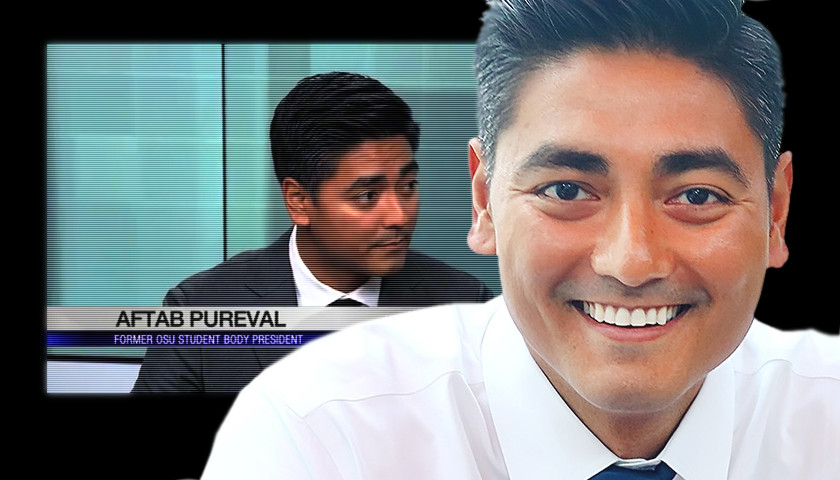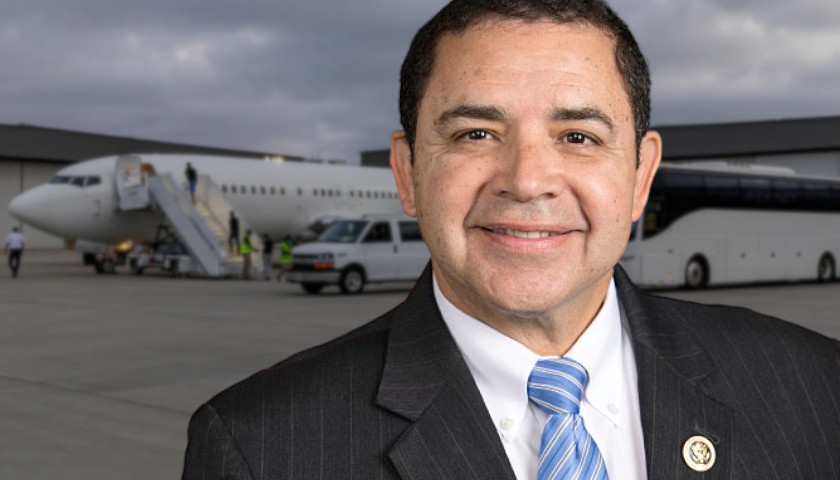One of Aftab Pureval’s favorite topics is “diversity.”
The 35-year-old Democrat, running for Ohio’s District 1 congressional seat against incumbent Republican Rep. Steve Chabot, loves to channel Hillary Clinton’s “diversity is our strength” message.
He and his foot soldiers have spent a lot of time campaigning at the University of Cincinnati in search of liberal college-student votes.
See his tweet below as just one example:
A packed house at the @SWOYBD launch tonight in Cincinnati. Our party celebrates diversity and inclusion, and these Young Dems are going to make a major impact in 2018. pic.twitter.com/np5mIBVSnX
— Aftab Pureval (@AftabPureval) February 3, 2018
Whether the issue is related to LGBTQs, women, African-Americans, or Somali refugees flowing into Columbus, Pureval can flawlessly turn on a dime and launch into a spiel about how Ohio “values” of diversity and inclusiveness are what make it great.
But what many Ohioans may find surprising is that when 11 students and faculty were injured in a car and knife attack by a Somalia-born Muslim student at Ohio State University on Nov. 28, 2016, Pureval immediately seized the opportunity to change the narrative from one of concern for student safety to that of promoting diversity.
Four days after the attack, in an on-camera interview with WSTR Cincinnati that lasted nearly 4 minutes, Pureval devoted all of 20 seconds to the victims before turning his attention to his favorite topic.
Pureval, a former OSU student-body president, when pressed about the fear the attack had caused, said, “the fear is real” and it was OK for students to be scared, but Ohioans should not let the attack affect their state’s commitment to “diversity and inclusiveness. This is what makes Ohio State and our country great.”
The Columbus area is home to the nation’s second-largest community of Somali refugees [only Minneapolis-St. Paul has more], and Pureval lamented that Ohio might not remain as “open” to immigrants from dangerous parts of the world like Somalia.
Watch video of the full interview below:
Pureval also made a sweeping generalization about why people choose to emigrate to America. He said, “everyone, truly everyone, comes here because where they were was less free.”
The short life of Abdul Razak Ali Artan, the OSU terrorist who came to the United States as a refugee around the age of 18 or 19, after graduating from high school in Pakistan suggests that broad generalization is more a desire than a reality. Artan’s family fled Somalia when he was 10 years old and lived in Pakistan for several years before arriving in the U.S. as “refugees.”
The very definition of a refugee, according to the 1951 Geneva Convention, is someone who suffers persecution or has a “well-founded fear” of persecution in their country of residence due to their racial, ethnic or religious background, or their political views.
Was Artan’s family – Muslims in the Muslim country of Pakistan – suffering persecution?
That was never demonstrated by any fact in the refugee admissions process.
What we do know is that the Islamic State called him one of its “soldiers” in the Army of Allah.
The FBI found that Artan had studied the teachings of the late jihadist cleric Anwar al-Awlaki and other radical imams. He lied about his age, saying he was 18 when later he was found to be at least two or three years older and had a fairly unremarkable career at a local community college in Columbus. He spoke in an interview for the OSU student newspaper, The Lantern, about the wonders of Pakistan. He voiced disdain for America and its people.
Here is a snippet from a Washington Post article by the same reporter who had interviewed Artan for The Lantern, just three months before the attack:
He told me about his family fleeing Somalia when he was about 10 years old — including fuzzy memories of his native, war-torn land — and then about living for years in Pakistan and how much he enjoyed it. He bemoaned what he felt were Western misconceptions about Pakistan: ‘It’s not like people believe.’ He told me about his family’s journey once they got to the United States just a few years earlier, first spending some time in Dallas before coming to Columbus, which has a large and vibrant Somali expat community.”
These do not sound like the words of a man who had come to America seeking freedom, as Pureval assumes is the case for every immigrant arriving on U.S. soil.
Artan continued in the above article to complain about not being able to pray in public on the OSU campus and how America was full of “Islamophobia.” Read the rest of Washington Post article here.
By all appearances, Artan did not flee to America because he desired freedom.
Indeed, he appeared to hate America, which he saw as full of evil “Islamophobes.”
As a result of Artan’s actions, 11 students were intentionally struck down by a gray Honda sedan he was driving, or brutally stabbed. And if it were not for a stroke of luck that placed a police officer in the vicinity of the attack on an unrelated call about a gas leak, Artan would have done much more damage. He was shot and killed by officer Alan Horujko within a minute of launching his attack.
One student suffered a fractured skull, others severe lacerations and broken bones.
This was not the first time the Columbus area experienced a brutal knife attack by a migrant living in the country illegally or through the manipulation of the refugee admissions program.
In February 2016, an illegal immigrant from Guinea named Mohamed Barry, who had been on the FBI’s terrorist watchlist for four years but never deported, entered the Nazareth Restaurant in Columbus and relentlessly attacked patrons with a machete. Three of them were seriously wounded, endured painful reconstructive surgeries, and suffer physical and emotional scars to this day. For a detailed account of that attack and its impact on not only the three victims but the owner of the restaurant, see the excellent article in Columbus Monthly, “One Year After the Machete Attack at The Nazareth Restaurant and Deli, Lives Have Been Irrevocably Altered.”
Diversity can be a good thing if immigrants are properly vetted and required to assimilate and adopt American values of peace and tolerance, but diversity without vetting and assimilation can lead to bad outcomes.





